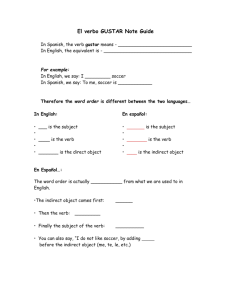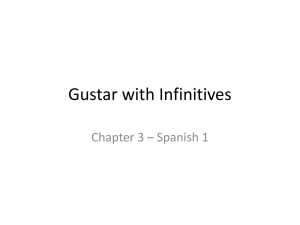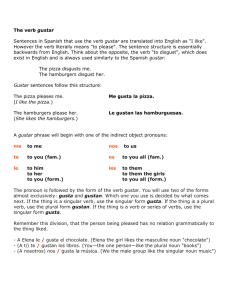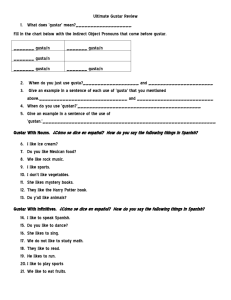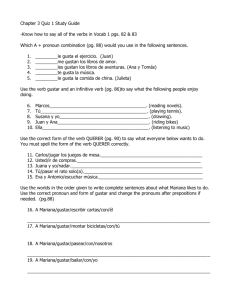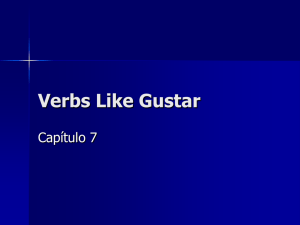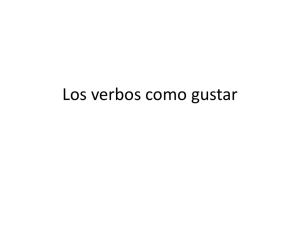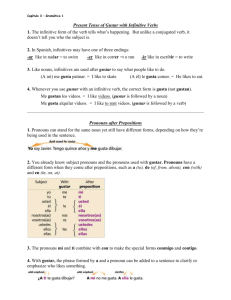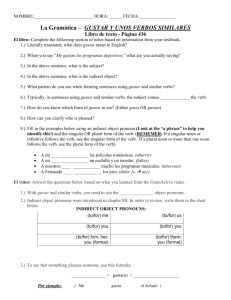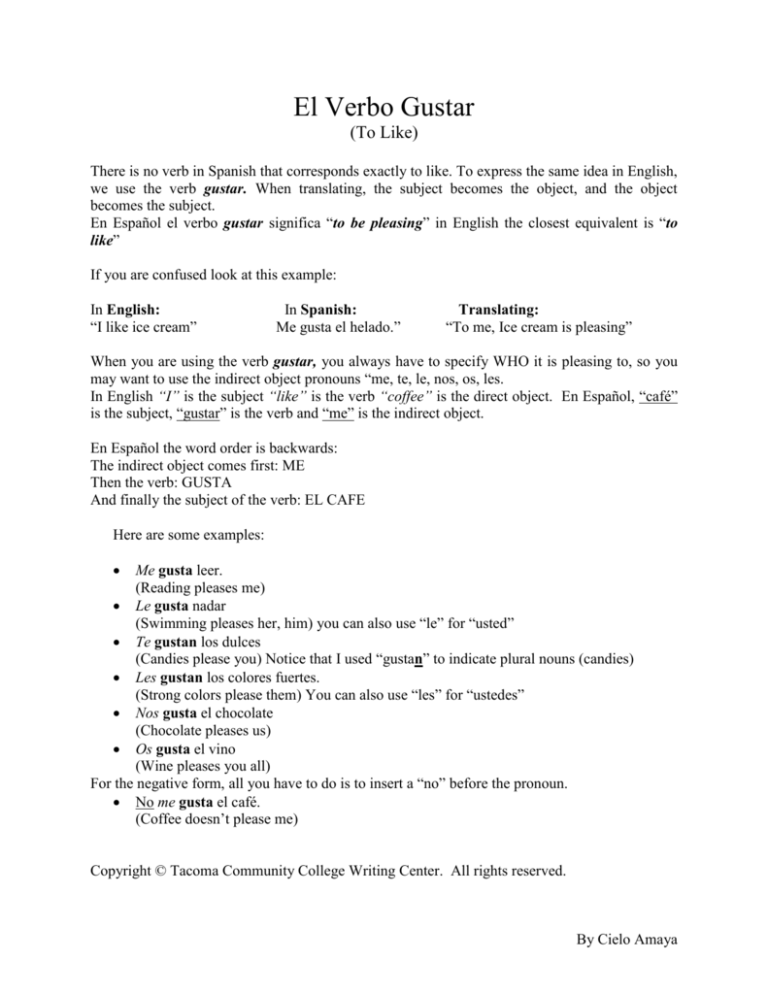
El Verbo Gustar
(To Like)
There is no verb in Spanish that corresponds exactly to like. To express the same idea in English,
we use the verb gustar. When translating, the subject becomes the object, and the object
becomes the subject.
En Español el verbo gustar significa “to be pleasing” in English the closest equivalent is “to
like”
If you are confused look at this example:
In English:
“I like ice cream”
In Spanish:
Me gusta el helado.”
Translating:
“To me, Ice cream is pleasing”
When you are using the verb gustar, you always have to specify WHO it is pleasing to, so you
may want to use the indirect object pronouns “me, te, le, nos, os, les.
In English “I” is the subject “like” is the verb “coffee” is the direct object. En Español, “café”
is the subject, “gustar” is the verb and “me” is the indirect object.
En Español the word order is backwards:
The indirect object comes first: ME
Then the verb: GUSTA
And finally the subject of the verb: EL CAFE
Here are some examples:
Me gusta leer.
(Reading pleases me)
Le gusta nadar
(Swimming pleases her, him) you can also use “le” for “usted”
Te gustan los dulces
(Candies please you) Notice that I used “gustan” to indicate plural nouns (candies)
Les gustan los colores fuertes.
(Strong colors please them) You can also use “les” for “ustedes”
Nos gusta el chocolate
(Chocolate pleases us)
Os gusta el vino
(Wine pleases you all)
For the negative form, all you have to do is to insert a “no” before the pronoun.
No me gusta el café.
(Coffee doesn’t please me)
Copyright © Tacoma Community College Writing Center. All rights reserved.
By Cielo Amaya

